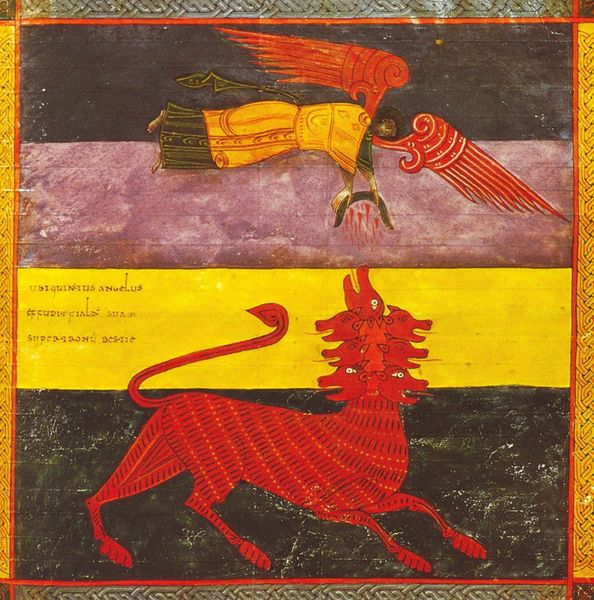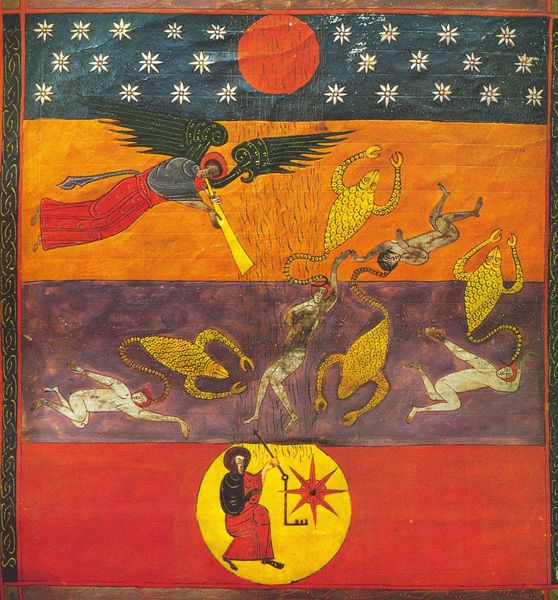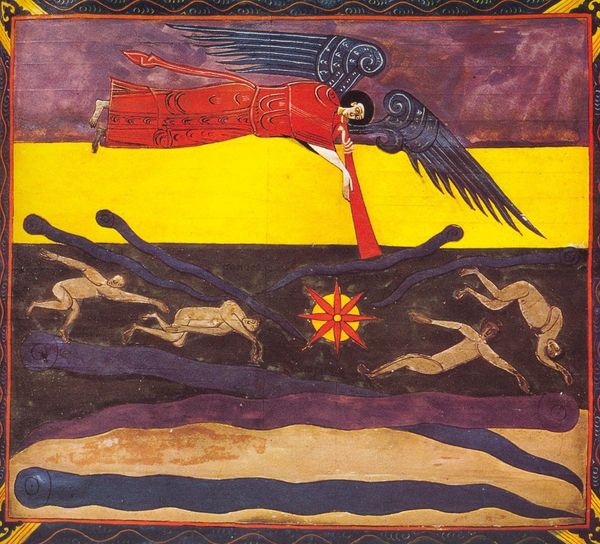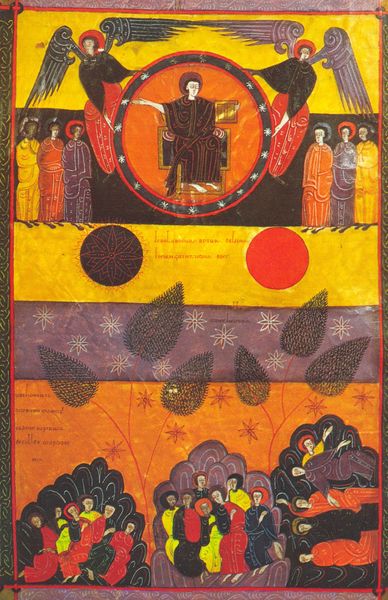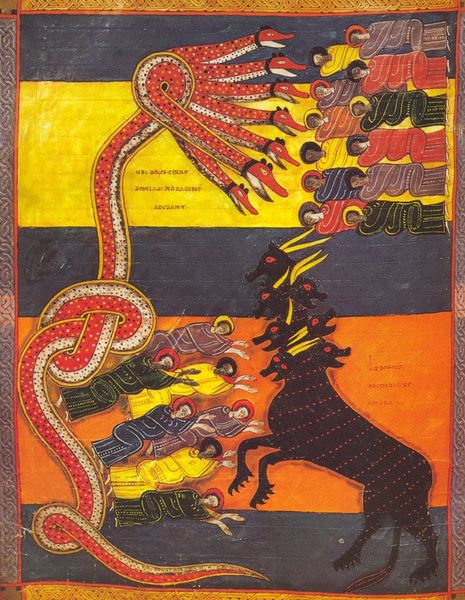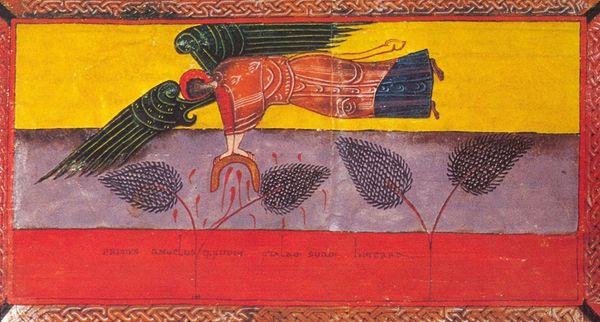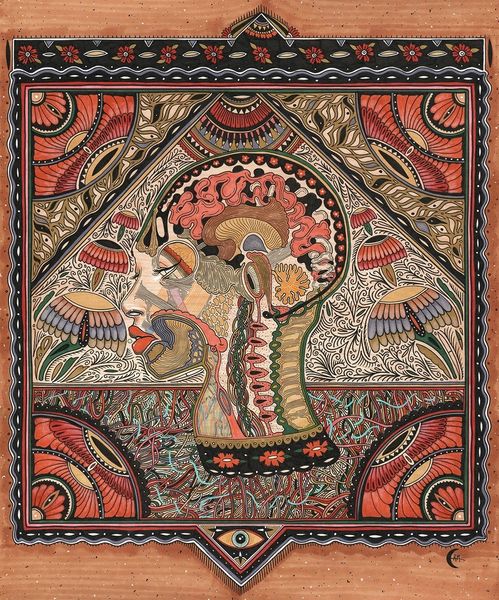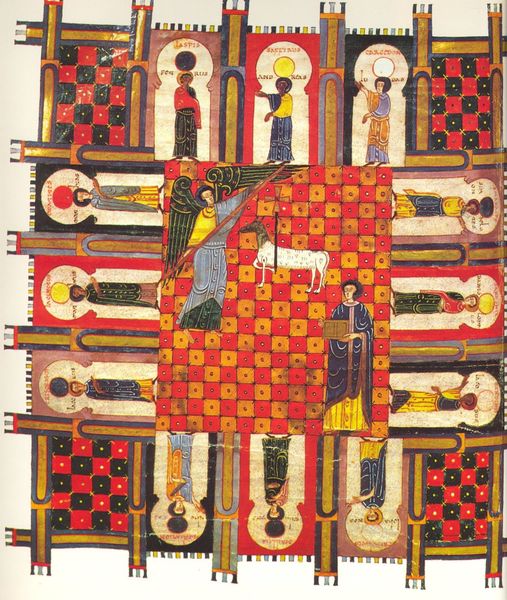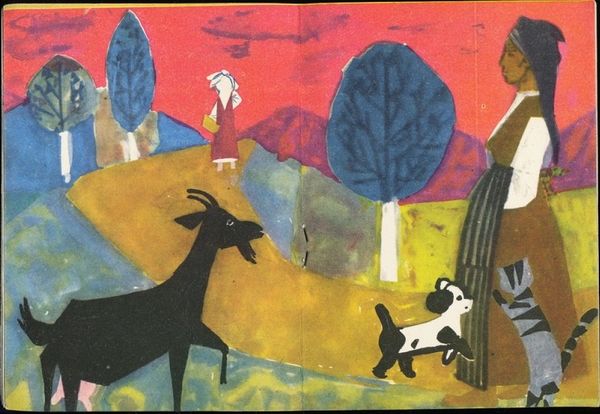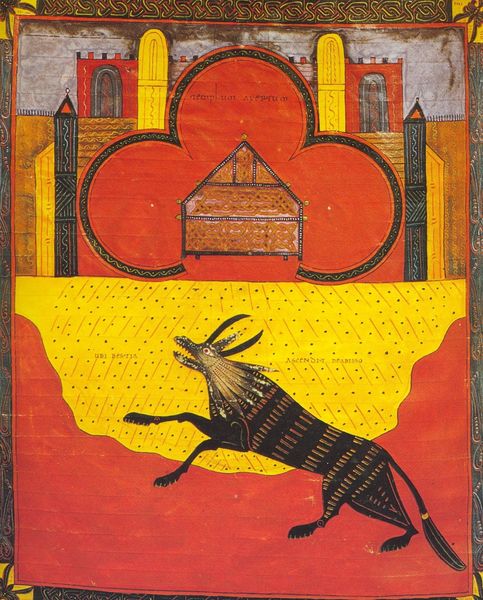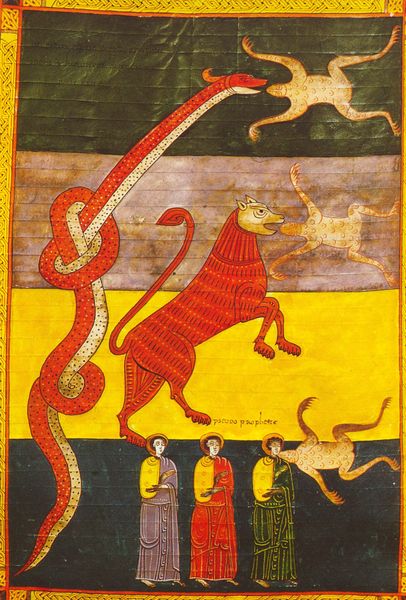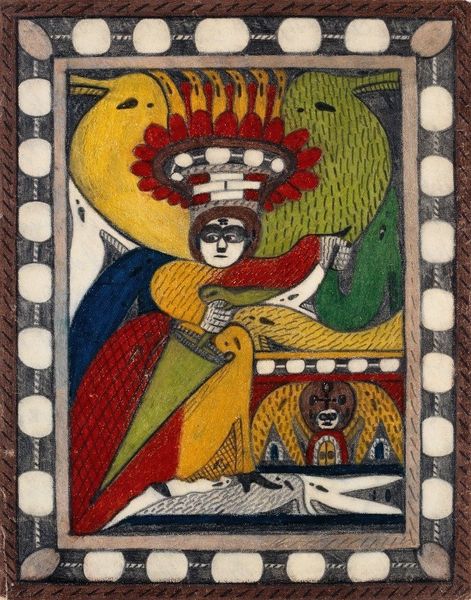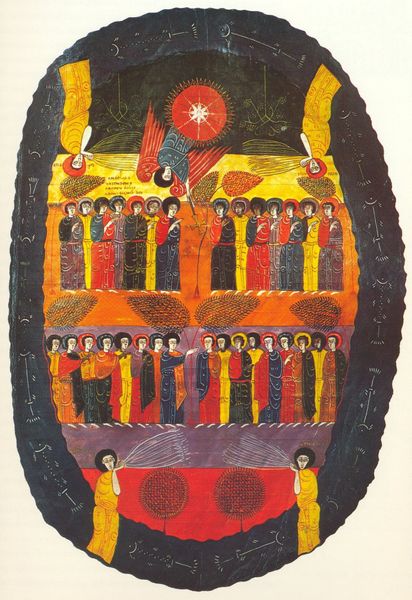
tempera
#
medieval
#
narrative-art
#
tempera
#
figuration
#
oil painting
#
naive art
#
history-painting
Copyright: Public domain
Curator: Let’s delve into this fascinating illumination, “La deuxième Trompette. La montagne embrasée tombe dans la mer. Apoc. VIII." It’s likely from a medieval codex, rendered in tempera, and presents a vivid scene from the Book of Revelation. Editor: Wow, what a dramatic color palette! It's got this, I don’t know, almost childlike exuberance with the sharp divisions of color, even though the subject is utterly terrifying – total annihilation from the heavens! There's something beautiful and nightmarish in that contrast. Curator: Exactly! The formal composition reinforces that. Note the clearly delineated zones—celestial, terrestrial, aquatic—each rendered in contrasting colors. This division would have immediately communicated the painting's symbolic structure to medieval viewers steeped in biblical literacy. Editor: Those stiff, stylized figures thrashing about in the water definitely add to that raw, urgent feeling. They're so vulnerable, and almost cartoonish in their panic, yet there's a profound pathos in their depiction. Do you know what it is with the lettering on the painting itself? Curator: Yes, the inscriptions would elaborate on the unfolding narrative. This scene depicts the second trumpet judgment. It's where a great burning mountain is cast into the sea, causing devastation – you can clearly make out the ships and bodies to show as much! What’s so striking is how a literal reading of scripture translates into a very direct visualization. Editor: I feel it, the image just vibrates with impending doom. Even with this sort of naive quality that comes through the tempera, you can just tell something terrible is about to go down. It almost puts you into the mindset of people who not only had to live by but were surrounded by stories of The Judgement all their life. Curator: That's precisely it. Art in this period functioned as both didactic tool and reflection of a worldview dominated by religious understanding and social belief of punishment and redemption. Consider how such images would have shaped a community’s understanding of divine power, the nature of sin, and salvation. It wasn’t passive reception; it was active negotiation of complex ideas. Editor: So, what begins looking very bold on the outside is ultimately incredibly personal and spiritual. Curator: Precisely. It allows us to engage in both the aesthetics and societal mindset of a fascinating past. Editor: Right? Medieval apocalyptic art has such an enduring appeal because it deals with our most primal fears while hinting at some glimmer of hope.
Comments
No comments
Be the first to comment and join the conversation on the ultimate creative platform.
